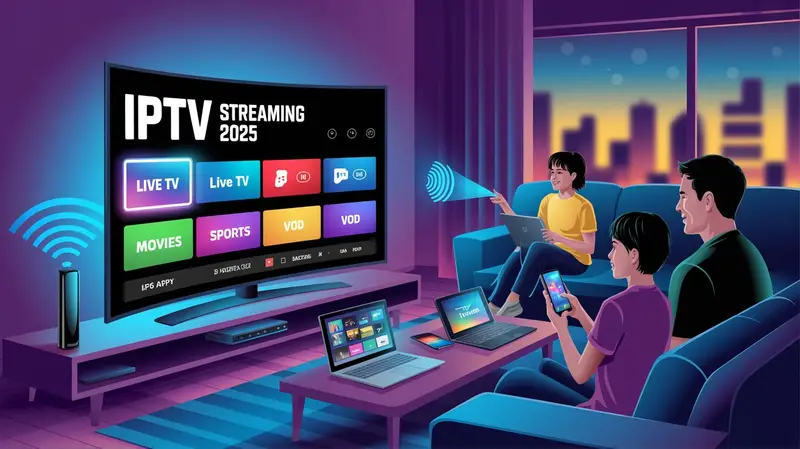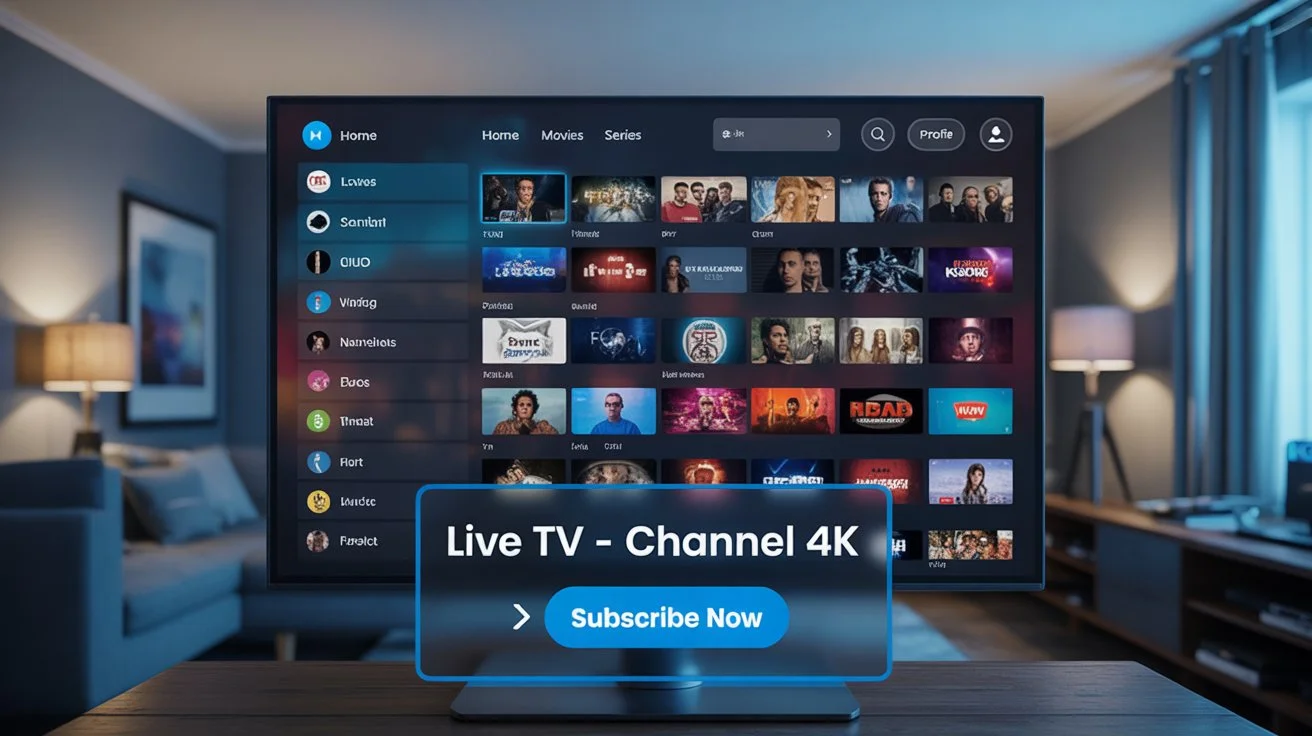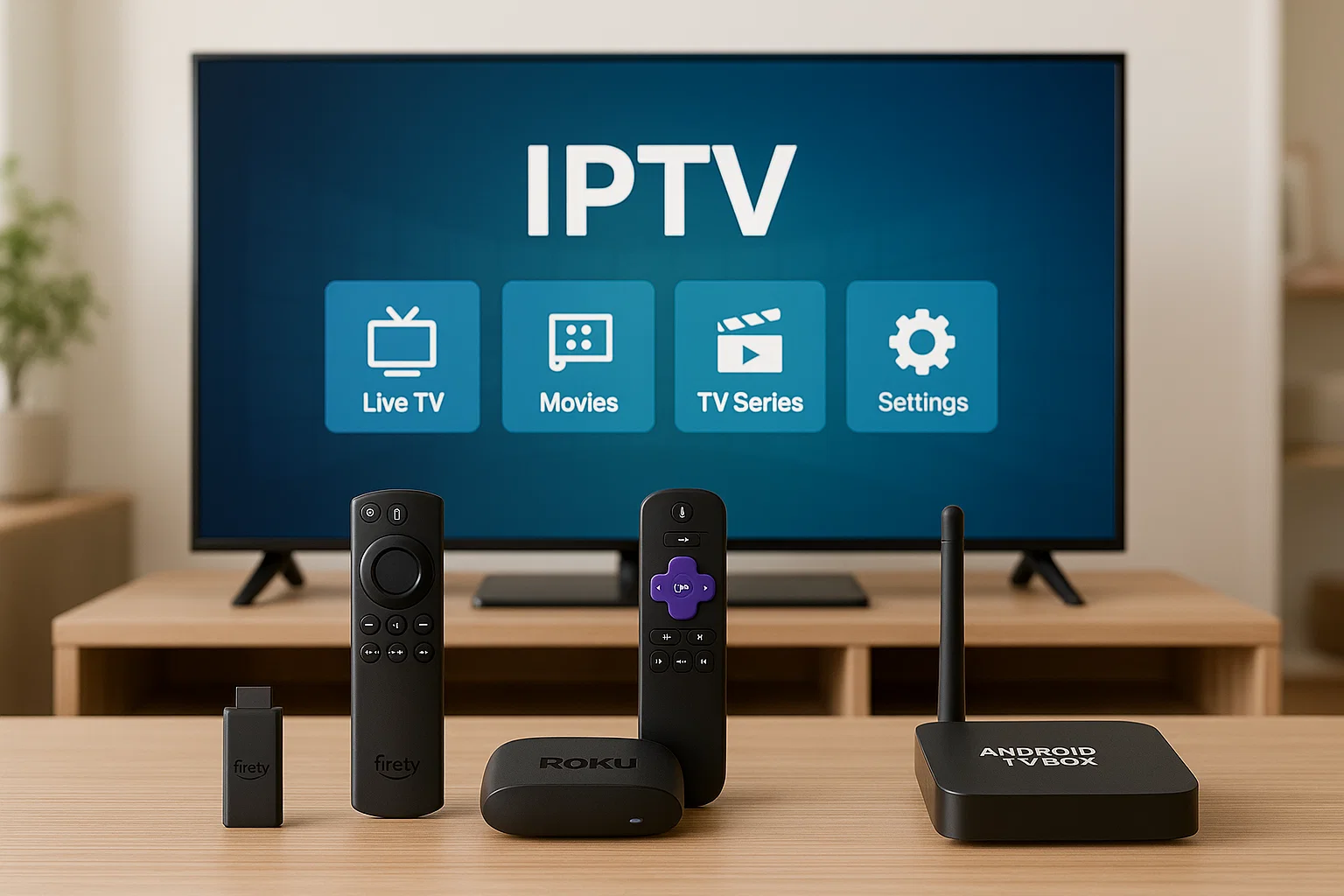The way we consume television has evolved dramatically over the past decade, and in 2025, we’re witnessing a true revolution in digital entertainment. Gone are the days of clunky satellite dishes, rigid cable schedules, and overpriced bundles. Instead, a powerful and flexible technology called IPTV—short for Internet Protocol Television—is reshaping the entire TV experience.
But what is IPTV, really? At its core, it’s a technology that delivers television content over the internet rather than through traditional terrestrial, satellite, or cable formats. That means no more waiting for a broadcast, no more limited channels, and no more “you missed it” regrets. Whether you’re streaming a live soccer match, binge-watching your favorite series, or diving into a documentary, IPTV makes it seamless, on-demand, and high-quality.
In this article, we’ll explore how IPTV works, the different types of IPTV services available, its numerous benefits, potential challenges, and how to pick the best IPTV provider for your needs. Whether you’re a tech-savvy cord-cutter or a curious newcomer, you’re about to discover the hidden power of Internet TV and why IPTV is the future of home entertainment.
Understanding IPTV Technology
Definition and Basic Concept
At its essence, IPTV—Internet Protocol Television—refers to the delivery of television content through Internet Protocol (IP) networks. Unlike traditional formats such as cable or satellite, which rely on physical mediums and broadcasting schedules, IPTV streams media directly through your internet connection. This distinction enables a host of advanced features, including live streaming, on-demand content, and personalized viewing experiences.
Think of IPTV like Netflix or YouTube, but more expansive. While services like Netflix are technically considered part of the IPTV ecosystem, IPTV platforms are often broader, including live TV channels, sports, international broadcasts, pay-per-view events, and more—all accessible via broadband internet.
This transmission happens in packets—just like emails or web pages—allowing for a far more flexible and efficient media experience. IPTV can be delivered over a managed or dedicated network, ensuring higher quality and reliability, especially for premium and live content.
How IPTV Works Behind the Scenes
The magic behind IPTV lies in how the content is encoded, transmitted, and decoded. Here’s a simplified breakdown:
- Content Acquisition – IPTV services first obtain live channels and pre-recorded content from broadcasters, studios, or content owners.
- Encoding & Compression – The video is compressed using formats like MPEG-4 or H.264 to ensure fast and efficient transmission over the internet.
- Streaming via Servers – Once encoded, the content is stored on servers and delivered to users via a Content Delivery Network (CDN). This system ensures fast, localized access to data.
- Client-Side Playback – On the user end, an IPTV-compatible device—such as a smart TV, set-top box, smartphone, or PC—decodes the video and displays it in real-time.
Users can watch IPTV through various protocols, such as HTTP Live Streaming (HLS), RTSP, or MPEG-DASH. The content may be played through dedicated apps, media players, or web portals, offering seamless access anywhere there’s a stable internet connection.
What makes IPTV especially appealing in 2025 is its growing synergy with AI, 5G, and smart home tech. These integrations allow users to enjoy hyper-personalized content recommendations, ultra-fast loading times, and smart voice controls that transform the living room into a command center of entertainment.
Whether you’re streaming a local news channel or catching a Bollywood blockbuster from across the globe, IPTV provides unprecedented convenience and control over your viewing habits—without the limitations of traditional cable or satellite setups.
Types of IPTV Services
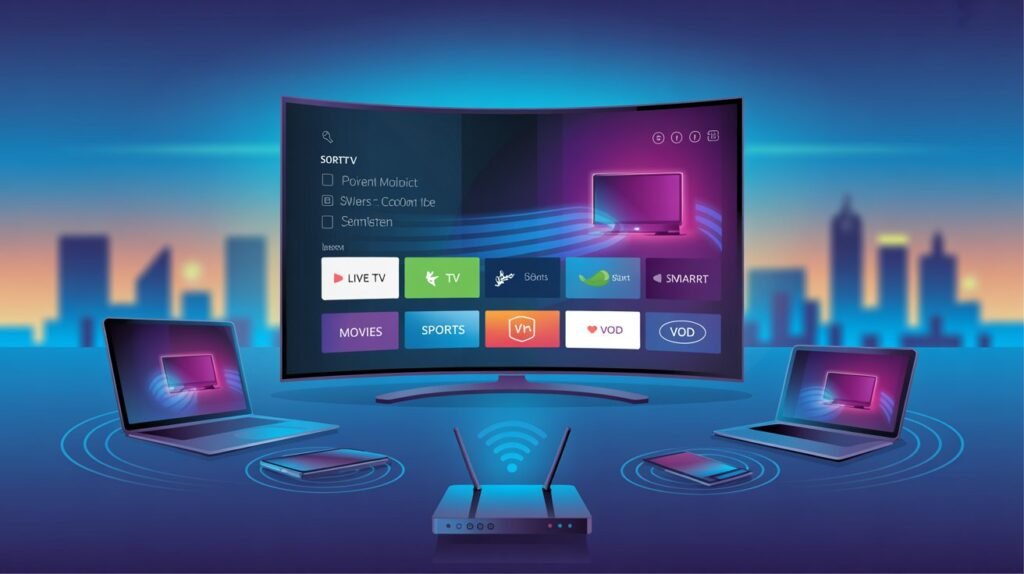
Live Television Streaming
Live TV streaming is one of the cornerstone offerings of IPTV. Unlike traditional broadcast systems that require massive infrastructure and airwaves, IPTV enables real-time viewing of television programs over an internet connection. Think of watching CNN, BBC, or ESPN as it airs—without needing a satellite dish or cable box.
This format replicates the traditional TV experience but with added perks: smoother transmission, interactive interfaces, and often, the ability to pause or rewind a live feed. IPTV providers usually offer channel packages organized by region, genre, or language, making it easy for viewers to find exactly what they’re looking for.
An essential benefit of live IPTV streaming is the global accessibility. Want to watch a Japanese cooking show while sitting in New York? Or follow European football leagues in real-time? IPTV breaks down geographic boundaries, offering a truly global viewing experience.
Furthermore, in 2025, many IPTV platforms incorporate adaptive bitrate streaming, which adjusts video quality based on your internet speed. This means fewer buffering issues and a more stable experience—even on mobile networks.
Video on Demand (VOD) and Time-Shifted Media
Another powerful dimension of IPTV is Video on Demand (VOD). VOD services allow users to select and watch content whenever they choose, rather than being tied to a broadcast schedule. You’re in charge—pause it, rewind it, watch it three times in a row—it’s your content, your rules.
Popular examples of VOD include movies, TV series, documentaries, and user-generated content. IPTV providers curate vast libraries that often rival or exceed those of traditional streaming giants. And because VOD is delivered over the internet, updates and new releases can happen faster than traditional cable channels.
Then there’s time-shifted media, which sits somewhere between live TV and VOD. This includes catch-up TV, where programs that aired earlier are made available for a set period (like 7 days), and start-over TV, which allows you to restart a live show from the beginning even if you tuned in late.
This flexibility is incredibly useful for busy schedules or different time zones. No more racing home to catch your favorite show. With IPTV, your content waits for you—not the other way around.
Whether you’re watching the news live, binge-watching last season’s drama, or replaying a missed episode, IPTV offers unmatched variety and control, tailored to your lifestyle in the digital age.
Benefits of Using IPTV in 2025
Flexibility, Accessibility, and Cost Savings
In the modern world of on-the-go lifestyles and remote work, flexibility is king. IPTV fits perfectly into this dynamic by offering watch-anywhere access—from living rooms to smartphones, smart TVs to tablets. As long as you’re connected to the internet, you’re connected to your content.
One of the most compelling advantages of IPTV in 2025 is its cost-effectiveness. Traditional cable packages often bundle dozens of channels you’ll never watch, bloating your monthly bill. IPTV, on the other hand, gives you à la carte freedom—you can choose channels or services that match your interests, cutting out unnecessary costs.
Many IPTV services offer subscription models with tiered pricing or even pay-as-you-go options, making it easier to control expenses. And because there’s no need for expensive hardware like satellite dishes or decoder boxes, the initial investment is significantly lower.
Accessibility is another huge win. IPTV is especially beneficial in regions where cable infrastructure is limited. All it requires is an internet connection—meaning even remote or underserved areas can enjoy high-quality TV streaming.
In 2025, with the proliferation of 5G and fiber-optic broadband, IPTV is faster and more reliable than ever. You no longer need ultra-high-end devices or blazing-fast speeds to enjoy smooth, HD streaming. Even modest internet setups can support IPTV with minimal lag or buffering.
HD Quality, Personalization, and Interactivity
Gone are the days of fuzzy resolution and clunky remote controls. IPTV in 2025 delivers crystal-clear HD and even 4K video quality, often accompanied by surround sound. And thanks to real-time compression and adaptive streaming technology, it automatically adjusts to give you the best possible quality based on your bandwidth.
Personalization is where IPTV truly shines. AI-driven algorithms now curate content based on your viewing history, ratings, and preferences. Whether you’re into indie films, anime, news, or niche sports, IPTV learns and adapts to serve you better entertainment.
Some platforms even offer user profile creation, which lets each family member get their own recommendations, watchlists, and settings. Parents can apply content filters for kids, and sports lovers can subscribe to real-time match alerts and stats.
But IPTV isn’t just about watching—it’s about interacting. In-app features now include instant polls, live chats during broadcasts, and social media integrations that let you share your opinions in real time. Want to rewind a key moment, pause to grab snacks, or fast-forward to skip intros? IPTV makes it effortless.
All these features create a rich, immersive viewing environment that’s no longer passive but dynamic and responsive, tailored to every click, swipe, and tap.
Challenges and Legal Considerations
Geo-Restrictions, Piracy, and Legal Use
While IPTV offers unmatched freedom and variety, it’s not without its complications—especially in the realm of legality and licensing. One of the most persistent issues in 2025 is geo-restriction. Certain content is licensed only for specific countries or regions, meaning even if the technology supports global access, the law might not.
This often leads users to VPNs or proxy servers to bypass restrictions. While this can work, it blurs legal lines and may violate user agreements with IPTV providers or content owners. Responsible viewing means respecting these boundaries and choosing platforms that hold proper licensing for the regions they serve.
Perhaps the most controversial aspect of IPTV is piracy. There are countless illegal IPTV services that offer thousands of premium channels at suspiciously low prices. These platforms often operate without the consent of broadcasters, making their offerings illegal and unethical.
Using pirated IPTV not only supports criminal enterprises, but it also exposes users to malware, fraud, and legal penalties. Many governments are cracking down hard in 2025, with hefty fines and even jail time for repeat offenders or providers of unauthorized streams.
The best advice? Stick with verified IPTV providers that comply with licensing laws and offer transparent terms of service. It’s safer, more reliable, and helps support the content creators who make your favorite shows possible.
Technical Barriers and Service Reliability
On the technical side, IPTV is still dependent on internet speed and stability. Unlike traditional TV, which functions through cable or satellite signals regardless of your data connection, IPTV can falter if your network isn’t up to par.
Even with 5G and fiber optics rolling out, not all areas enjoy fast and stable internet. This means some users might face buffering, low video quality, or interruptions—especially during peak hours.
There’s also the matter of device compatibility. While most smart TVs and media players support IPTV, older devices may require additional hardware like set-top boxes or streaming sticks. Configuring these systems can be complex for non-tech-savvy users.
Another common issue is server overload, especially during live events like major sports matches or award shows. If too many people tune in simultaneously, unprepared IPTV services may crash or stutter. This is why it’s crucial to choose providers with robust infrastructure and scalable systems.
Lastly, IPTV relies heavily on app stability and regular updates. Unmaintained apps can suffer from glitches or become incompatible with newer operating systems, disrupting your entertainment flow. The best services provide regular patches, user support, and documentation to ensure seamless experiences.
Being aware of these limitations doesn’t diminish IPTV’s value—it enhances your ability to make smart, informed choices and sets realistic expectations about the service you’re getting.
How to Choose the Right IPTV Provider
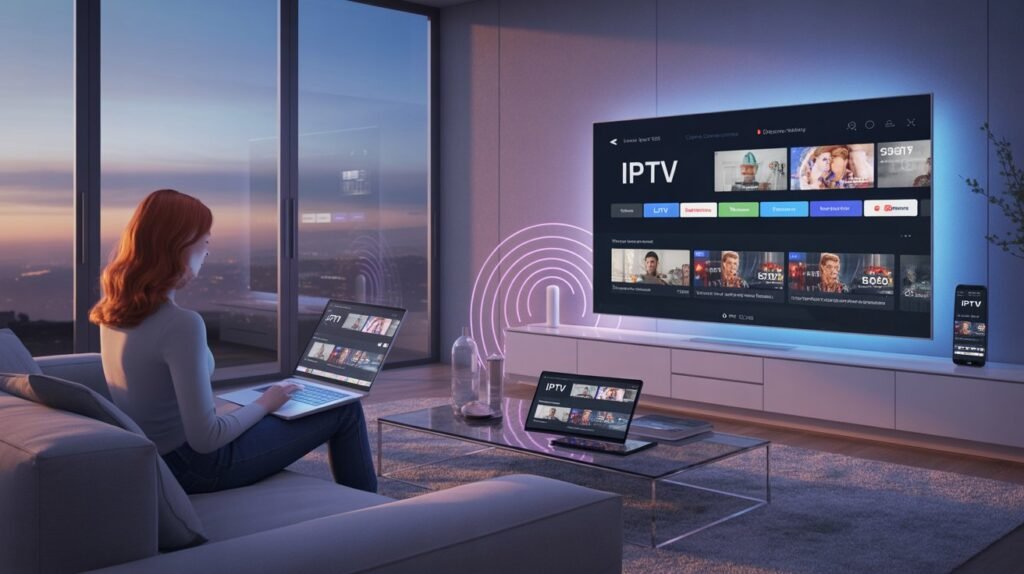
Key Features to Look For
In a market flooded with IPTV options, choosing the right provider in 2025 is more important than ever. It’s not just about who has the most channels or the lowest price—it’s about a combination of reliability, legality, performance, and user experience.
Start by looking for a provider with a transparent channel list. Reputable IPTV services will clearly state what’s included in your subscription—sports, international channels, movies, children’s programs, etc. Beware of vague listings or “too good to be true” offerings. If a provider promises all premium channels for pennies, it’s likely illegal or unstable.
Another key feature is multi-device support. The best IPTV services allow streaming on several devices simultaneously—smart TVs, smartphones, tablets, PCs, and even gaming consoles. Some even support casting features and built-in apps on Firestick, Roku, or Apple TV.
You’ll also want to ensure the provider supports Electronic Program Guides (EPG) and catch-up TV. EPGs help you browse schedules easily, while catch-up allows you to watch shows you missed up to several days later—perfect for busy schedules.
Video quality matters, too. A solid IPTV provider will offer content in HD or 4K where available and support adaptive streaming so you don’t suffer lag during internet fluctuations.
Finally, look at customer support. Do they offer 24/7 live chat or email help? Is there an FAQ or a user forum? IPTV is tech-heavy, and responsive support can make all the difference when something goes wrong.
Tips for Safe and Legal IPTV Usage
Ensuring your IPTV usage is both safe and legal begins with vetting the provider’s background. Legitimate services are often registered as businesses, have partnerships with content providers, and adhere to local licensing regulations.
Check if the provider offers a free trial or demo. This allows you to test performance, content variety, and user interface before committing. Avoid providers that ask for full payment upfront without offering a preview.
When it comes to payment methods, look for secure options like PayPal, Stripe, or credit cards. Avoid providers that only accept crypto or wire transfers—they’re often untraceable and risky.
It’s also wise to use a reputable media player app like VLC, TiviMate, or Smart IPTV. These apps enhance compatibility and often come with advanced features like custom channel sorting, parental controls, and EPG integration.
Lastly, if you’re using IPTV in a region with stricter regulations, consider consulting local laws or using only region-approved providers. Not only does this keep you compliant, but it also protects your device from viruses and unauthorized access.
By taking a smart, informed approach, you can enjoy all the benefits of IPTV—freedom, flexibility, and fantastic content—without falling into the traps that less cautious users may face.
Conclusion
So, what is IPTV—and why is it such a game-changer in 2025? Simply put, IPTV stands for Internet Protocol Television, a cutting-edge system that delivers TV content via the internet rather than traditional broadcast methods. It’s fast, flexible, and tailored for modern viewers who demand convenience, quality, and control.
From live broadcasts and sports events to binge-worthy series and educational shows, IPTV gives you the power to watch what you want, when you want, and how you want. The ability to stream on multiple devices, customize your experience, and avoid hefty cable bills makes IPTV the go-to solution for a tech-savvy generation.
However, with this innovation comes responsibility. Choosing a legal, secure IPTV provider ensures a smoother, safer experience. Understanding the differences between services, staying informed about geo-restrictions, and using reliable platforms will empower you to get the most out of your IPTV setup.
Whether you’re a digital native or just stepping into the world of streaming, IPTV offers a world of possibilities that are just a few clicks away. In 2025 and beyond, it’s clear: IPTV isn’t just the future—it’s the now.
Frequently Asked Questions
What does IPTV stand for?
IPTV stands for Internet Protocol Television. It’s a system that delivers television content using internet protocols instead of traditional satellite or cable systems.
Is IPTV legal?
Yes, IPTV is legal when the provider has the proper licenses to distribute content. However, many illegal services exist, so it’s important to choose a legitimate, licensed provider.
Do I need a smart TV for IPTV?
Not necessarily. While a smart TV makes it easier, you can also use IPTV through set-top boxes, smartphones, tablets, PCs, or streaming devices like Roku and Firestick.
How fast should my internet be for IPTV?
For a smooth HD experience, you’ll need at least 10 Mbps. For 4K or multiple streams, 25 Mbps or higher is recommended.
Can I watch live sports on IPTV?
Absolutely. Many IPTV services offer live sports channels and even pay-per-view events. Just ensure your provider is reputable and legal.
What is the difference between IPTV and cable?
Cable TV uses physical coaxial cables and has fixed schedules. IPTV streams content over the internet, offering more flexibility, interactivity, and on-demand options.
